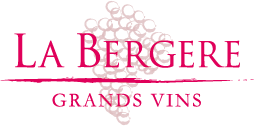Lights on… Château Mouton Rothschild
Owner: Philippine de Rothschild
Classification: Premier Grand Cru
Surface of vines: 75 hectares
Average annual production: 300,000 bottles
Red color
Base grape varieties: Cabernet Sauvignon (85%), Merlot (13%), Cabernet Franc (2%)
Second wine: Petit Mouton

Story
The origins and ancient history of Mouton-Rothschild are somewhat vague, but it is known that the estate was offered to the Duke of Gloucester at the beginning of the 15th century, before becoming French again following the Hundred Years' War. However, it will be necessary to wait until the 18th century before viticulture takes on importance in Mouton. Joseph de Brane bought the estate in 1720, which was then renamed Brane-Mouton. His efforts had a first-rate impact on Mouton's success and by the end of the 18th century the wines of the burgeoning estate were highly respected. In the 19th century, activity was temporarily slowed down when Hector, Joseph's grandson, sold the vineyard to a Parisian banker. The negligence of the owner, very little present, resulted in a frank deterioration of the quality. Although Baron Nathaniel de Rothschild bought the property in 1853 and quickly set about restoring its image, Mouton Rothschild, the name by which the estate was now known, was classified as a Second, and not a Premier Grand Cru in 1855, in gone, it seems, because the estate was no longer French property.
In 1922, Philippe Rothschild took control of the estate. He began a period of revolutionary changes for Mouton, including bottling at the estate (a practice still unknown in Bordeaux). The start of the Second World War forced Philippe to flee France and the estate was transformed into headquarters for the German troops, but production continued, under the direction of Hermann Goering. When the conflict was over, Philippe returned to Mouton and commissioned an artist to design a label glorifying the victory of the Allies. Since then, the estate has repeated this initiative with a new artist each year. To date, the list of contributors includes Freud, Picasso, Dalí, Francis Bacon and even the Prince of Wales.
In 1973, Mouton-Rothschild made history by becoming the first (and possibly the last) estate to improve its initial ranking in the Immutable Theory Classification of 1855. Philippe's determination and militancy enabled Mouton to join the Premiers Grands Crus, thereby redressing what he called a "monstrous injustice".
Philippe died in 1988, after leading the estate in a remarkable way for 65 years. Today, it is his only daughter, Baroness Philippine de Rothschild, who runs the estate.
The 2009 vintage
The 2009 vintage is made up of 88% of Cabernet Sauvignon and 12% of Merlot. It has a moderate alcohol content of 13.1%.
Although the 2009 vintage was very successful on many counts, Parker did not rate it as highly as other Premier Grands Crus, awarding it 96-98+. According to him, it is “the least advanced and evolved Premier Grand Cru of the left bank Médocs”.
Jancis Robinson also rated him slightly worse than Lafite, Latour and Margaux, with a rating of 18.5+, while James Suckling called him "the best Mouton since 1982 or 1986" and gave him 97-100 points.
Since its launch, Mouton-Rothschild has proven to be one of the worst-selling 2009 vintages. This perhaps proves that Parker's ratings still have an influence on prices.
On the market
At the end of November 2008, Mouton-Rothschild officially announced that the label for the 2008 vintage would feature the work of a Chinese artist. Despite months of speculation, this statement fueled the market considerably, lifting prices 15% overnight to €9,400 cash. This impressive increase in prices for Mouton-Rothschild 2008 has also stimulated trade in less renowned vintages, with a marked increase in demand for more affordable years. As a result, the value of the 2000 to 2007 vintages has increased by 16% on average since November, while the 2004 vintage, which sold for less than €3,000 a box at the start of November, recently traded at 3,700 €, an increase of 26%.
Following these rapid increases, the average price of Mouton-Rothschild vintages since the beginning of the millennium has reached more than €6,000 a case. It is therefore not surprising that buyers are turning to older vintages, which often offer very good value for money.
The 1996 vintage at 94 points received particular attention this month and has sold several times today between €4,900 and €5,200 a case. This wine is currently trading on the market at €5,230 per case.
Source: lix ex
Jan 13, 2011
